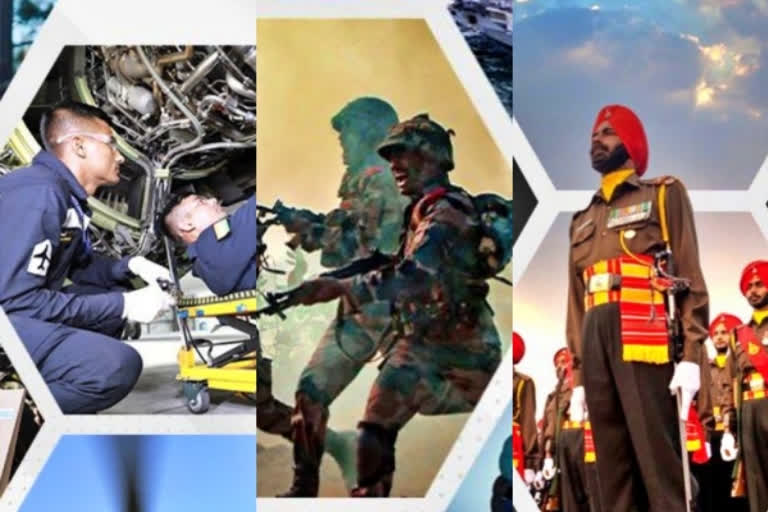New Delhi: When the country’s defence minister, flanked by the chiefs of India’s Army, Navy and Air Force, along with the defence secretary sits on the same podium to make an announcement, it would veritably shake the edifice of India’s military institution. It could mean even more if the defence minister Rajnath Singh had just come out from the Union Cabinet meeting that was chaired by the Prime Minister on Tuesday morning.
That is what happened on a suddenly-convened press conference on Tuesday afternoon at the national capital’s posh National Media Centre—a stone’s throw from the corridors of power at Indian parliament and the central seat of bureaucracy at North Block and South Block at Rai Sinha Hill. The announcement—after two years of intense and detailed deliberations and discussions—was along expected lines and radically changes the traditional recruitment system of picking the fighting men (and women) to populate the world’s second-largest military of about 1.4 million.
At the core, the new system of recruitment, called ‘Agnipath’ or the ‘way of the fire’ and aptly described by Navy chief Admiral R Hari Kumar as comprising “the wisdom of experience and the exuberance of the youth” entails recruitment of personnel below officer rank (PBOR) in the three services of the Armed Forces for four years, including six months of training.
Also read: Explained: All about Agnipath, Agniveers
What ‘Agnipath’ will do is to harness the peak fitness and dynamism of the youth aged between 17.5 to 21 years, and with one stroke bring down the average age profile of the Indian soldier from 32 to 26 years, shaving off six years. The ‘Agnipath’ system will hit the ground running with the first rally for recruitment set to take place in exactly 90 days.
Defence minister Rajnath Singh brought with him COAS General Manoj Pande, CNS Admiral V Hari Kumar and CAS Air Chief Marshal VR Chaudhari if only to showcase the keen consensus of the three services on the new reform and that they are all on the same page as it concerned recruitment for all the three services. Indicating the far-reaching implications of the new ‘paradigmatic’ change, Singh said there has been an overabundance of positive feedback from the states of the country “which you will get to see in the coming days”.
On completion of four years, one-fourth or 25% of the ‘Agniveers’ will be re-employed for 15 more years based on merit, their intent and the organizational requirement. The remaining three-fourths or 75% would be adequately compensated with an attractive retirement package called ‘Seva Nidhi’. While the ‘Agnipath’ scheme has drawn considerable criticism from military veterans on various grounds including that of leading to an under-trained, poorly motivated and inefficient military, there are very few doubts that it has actually been necessitated by the burgeoning salary and pension bill of the military at the cost of modernisation and acquisition of latest weaponry.



